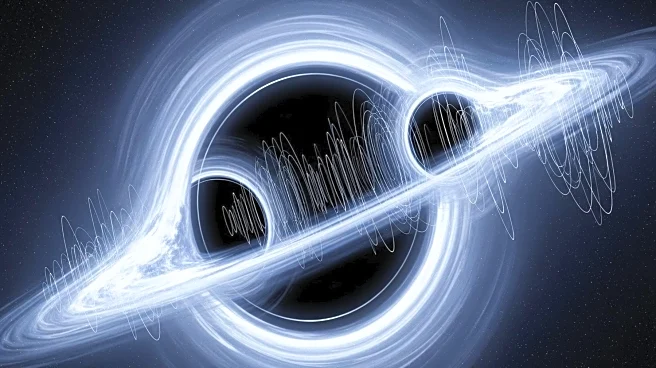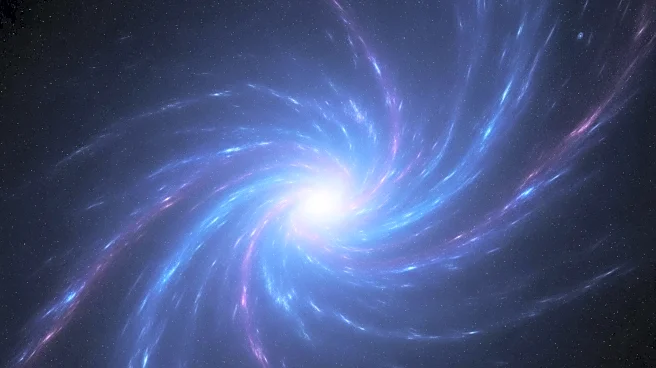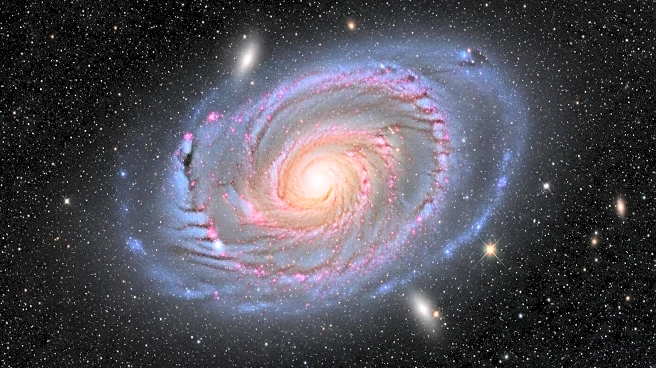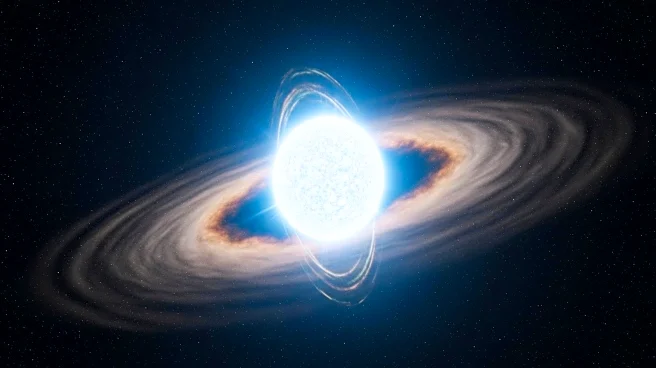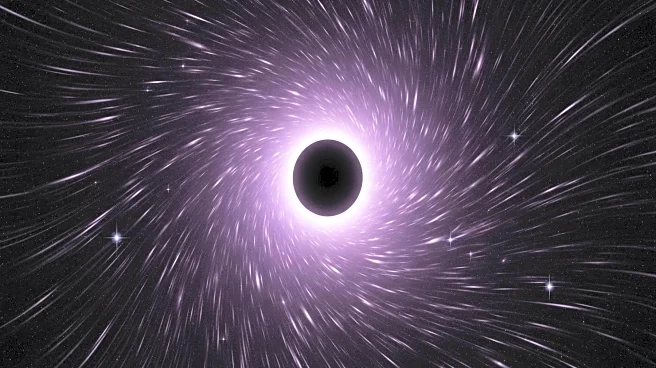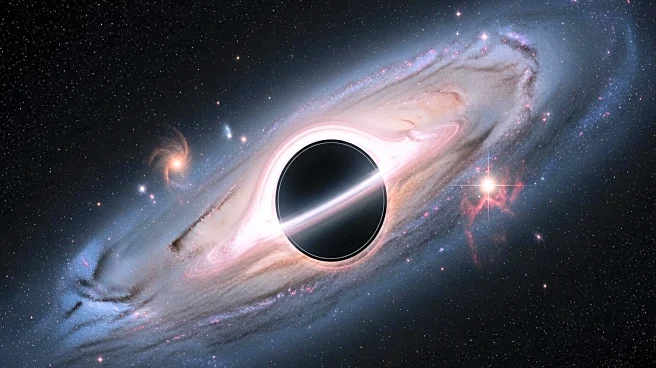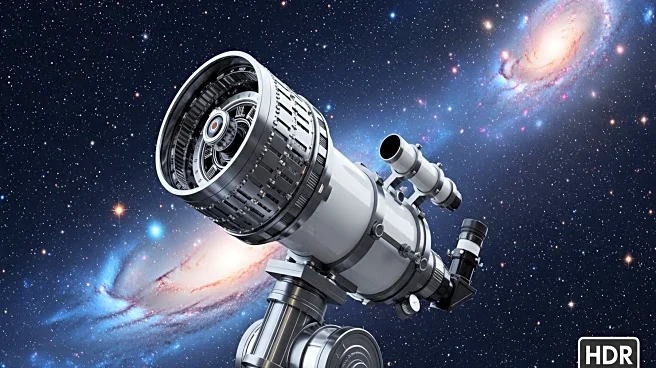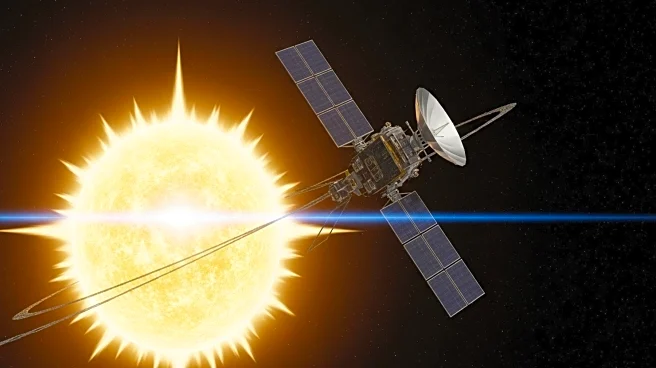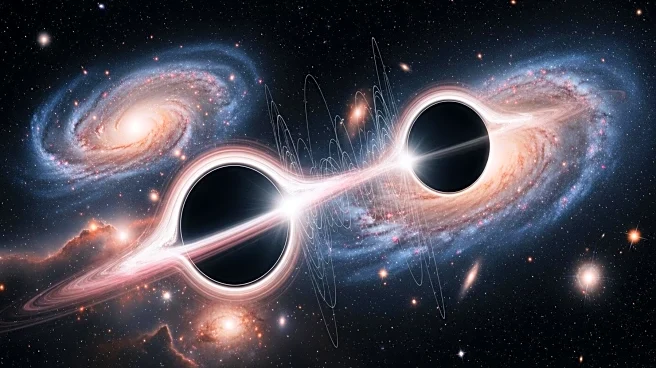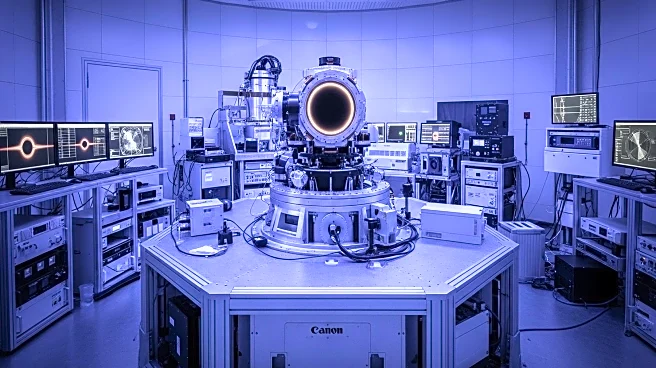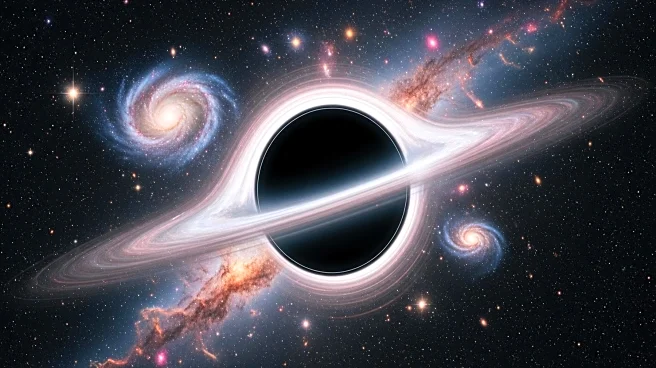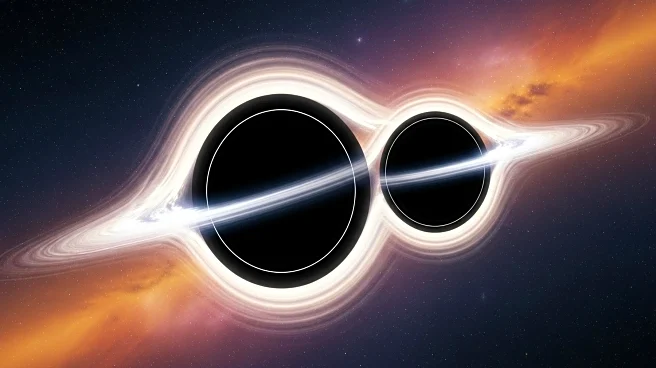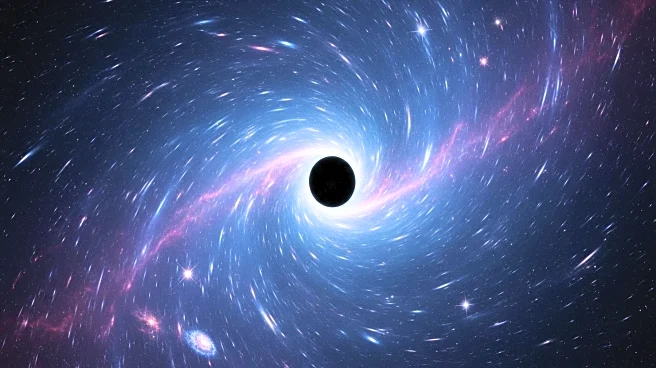What is the story about?
What's Happening?
The Laser Interferometer Gravitational-Wave Observatory (LIGO) has made a significant observation by measuring the speed and direction of a recoiling black hole resulting from a merger detected in 2019. This event, which involved the merging of two black holes, resulted in a massive recoil, with the black hole remnant moving at speeds exceeding 50 kilometers per second. This observation marks the first time the full 3D motion of such an object has been reconstructed using gravitational waves, providing new insights into the dynamics of black hole mergers.
Why It's Important?
This observation by LIGO is a major advancement in the field of astrophysics, as it provides empirical evidence supporting theoretical models of black hole behavior. The ability to measure the recoil of a black hole enhances our understanding of gravitational wave phenomena and the forces at play during cosmic collisions. This discovery not only validates existing theories but also opens new avenues for research into the nature of black holes and the fundamental principles governing the universe. The findings have the potential to reshape our understanding of cosmic dynamics and the evolution of galaxies.
What's Next?
The success of this observation encourages further research into gravitational wave phenomena and black hole dynamics. Future observations by LIGO and other observatories are expected to provide additional data that will refine our understanding of these cosmic events. The scientific community is likely to focus on developing more sophisticated models to predict and analyze black hole behavior, with the goal of uncovering new insights into the universe's structure and evolution. Continued international collaboration will be essential in advancing this field of study.
AI Generated Content
Do you find this article useful?
